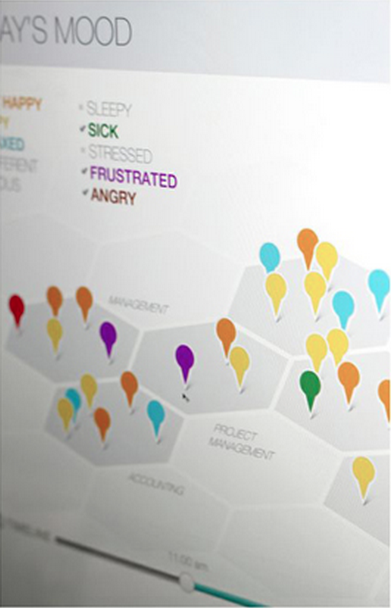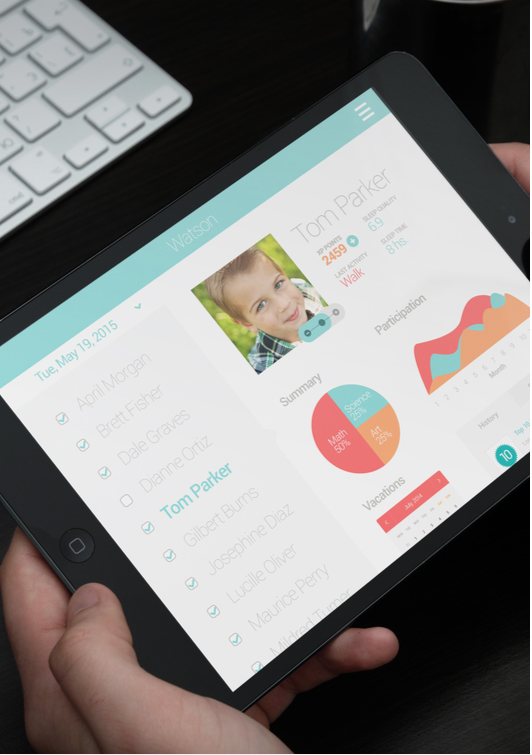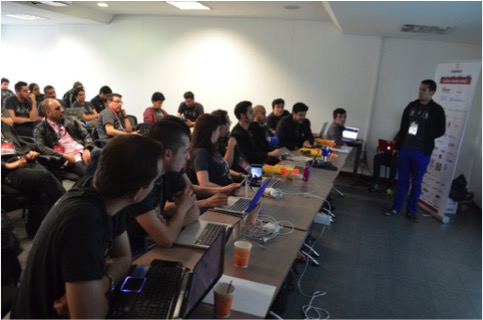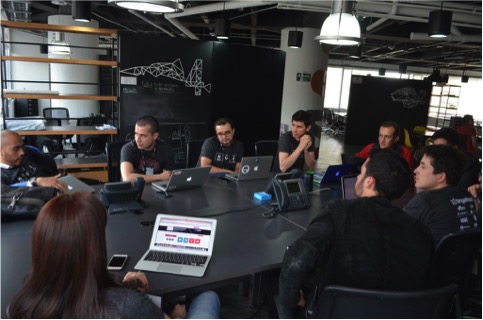Let’s first get one thing clear. Native Advertising isn’t going anywhere. It’s growth is only upward and to be honest, I don’t mind it. Ultimately, as a digital design agency, we have to think about how to best interact with humans. The ethics of native advertising are well debated, and I won’t add to that debate. The key for me as a strategist is to find ways to connect with people that feels less disruptive. I know we in the tech world love “disruption”, but most of the world doesn’t, especially when it comes to how they interact with things on a day to day basis.
Month: July 2015
Where’s the Fun in Native Advertising?
Native advertising, as with most of the buzzwords we hear and say everyday, everywhere, is a concept that is defined in so many different ways it’s just confusing. The “official” definition implies that every ad that fits naturally and feels like other types of content in the page fits perfectly into this category. The definition of the word “naturally” is very subjective, though. It’s as simple as this: the same ad in the same placement could feel more natural to some users than others.
The Many Meanings of Native Advertising
The definition is so broad that it includes things like sponsored posts on Facebook or promoted posts on Twitter. The playbook created by IAB even mentions the inline ads you find between two paragraphs of an article you’re trying to read on your phone and it covers those recommendation widgets that are confusing to some users and just disappointing to others. It goes as far as to include paid search units.
I wouldn’t say those ads I’ve run into while scrolling through my timeline feel natural —although Facebook is doing a better job than Twitter at that. I can say I don’t trust those external articles you find contained in recommendation widgets at the end of an article you just read in ESPN —I trust ESPN as a content creator, however those “sponsored articles” are not being selected by ESPN but by the third-party that created the widget (Outbrain, Taboola, Earnify, etc). In the same way, most of the times when searching something on Google, I instinctively tend to prefer links that appear organically and ignore those that are clearly paid and promoted.
How Is This Better Than Standard Banner Ads?
One thing you can say about the examples I mentioned above is that all those ads are displayed based on a certain context. Granted, that context can be more or less accurate depending on the kind of data it is built upon. But searching for “Cartagena Hotels” on Google, for example, shows me paid search results related with Cartagena, Colombia and not Cartagena, Spain. Google seems to figure out the context based on the search term and my location and then displays paid search results based on that, which is very smart. Recommendation widgets define the context by assuming you are interested in the topic you were reading about and then display article recommendations (from other publishers) related with that topic. I’m not going to go case by case, but one starts to see there is a common element in all these different ad solutions.
The common element is context. They try to address the consumer more accurately by using the data they have at hand, so you could definitely say they are getting smarter. The problem is that while they are smarter, they are still not adding much more value to the consumer’s experience. They are just being a better informed door to door salesman. Almost equally annoying.
Adding Meaning to Context
Context alone is cool and it does increase the chances of getting to the right audiences in the right moments. However, the concept of native advertising covers other approaches that are pushing to make native ads more meaningful and valuable.
Buzzfeed’s revenue model is based almost entirely on sponsored articles. Ranging from 15 Of The Best Bands To Come From College Campuses (sponsored by Spotify) to the much less subtle 12 Ways Nutella® Makes You Smile (sponsored by Nutella), BuzzFeed has created what would be the perfect win-win scenario. Readers getting content that is entertaining and brands capitalizing by raising awareness and sponsoring content that is aligned with their attributes. However, the area of the layout of the article that says that this is a sponsored article is so small and subtle, a large group of users don’t see it and content passes as regular content, not as sponsored content, which gives room to all types of concerns.
Adding Extra Value Through Custom Native Ads
Referring back to IAB and their Native Advertising Playbook, “In the world of native advertising execution, there is no limit to the possibilities when an advertiser and publisher work together on custom units”. That’s probably the most valuable bit of the entire document and makes one thing clear: key to success here is in collaboration. Advertisers and their agencies can (and should) be as creative as they want. Publishers are always open to trying new stuff as long as it is well paid. They kind of need to be open, to be honest. Custom native ads are probably the most expensive of the group, but they’re definitely the most impactful.
An example of this is the partnership between Netflix and The New York Times. The newspaper produced an in-depth piece on the conditions women face in American prisons and Netflix sponsored it by connecting the topic of the article with the theme of their series “Orange is the New Black”. The beauty of it is it doesn’t feel like a regular article of the newspaper’. The design was 100% custom and incorporated exclusive illustrations, in addition to the quality of the text content produced by the newspaper. The strategy was not to appear as a regular article and confuse. It was to reinforce the presence of the product by attaching to a special article on a related topic.
Custom content also means each case is different. This makes things more exciting for everyone involved: brand, publisher and agency. We personally had a lot of fun helping Rolling Stone and Wenner Media in their process of adding custom sponsored content to the products they offer to their super cool clients. In the case of Indian Motorcycles, the tie between motorcycles and rock music was reinforced by a custom article that was a highly visual list of the 40 most groundbreaking albums of all time. All the content was created by RS, and the brand appeared inserted into the story in the most organic way possible. The brand did fit very naturally in the story and both the design and the content of the article where in line with the magazine’s expected quality.
Especially when it comes to sponsored content, ethics are a big deal here and the more honest the brand messages feel and the less the publisher’s principles get compromised, the better for everyone, in the end. Publishers need to establish rules and filters and take care of their reputation. When it comes to deciding how far publishers can go for any given brand, there has to be a line that each publisher will have to draw according to their ethical values.
Zemoga Takes Home Hardware
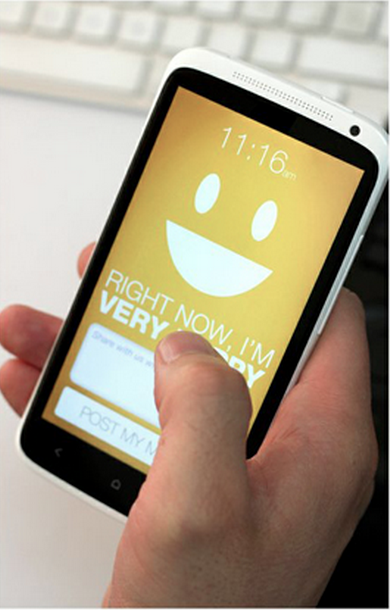
Exciting news!! Zemoga recently took home both a Connecticut Art Directors Club and a Summit Award for our work with PSFK and Men’s Journal.
Zemoga received a Silver Summit Award for our “Office Mood Check-In” concept. The “Office Mood Check-In” was designed in response to PSFK’s Future of Work report.
As a concept created and submitted by Zemoga, The Office Mood Check-In, would monitor employee sentiment in an office. Employees would check-in with how they’re feeling, and the app would then create graphs and other useful tools based on that data.
Learn more about this concept here.
We were also awarded a Silver Connecticut Art Directors Club Award for the Men’s Journal feature article, Milos Raonic and the Future of Tennis. Zemoga handled the design and front-end development for a feature article on the Men’s Journal website. The result was an interactive and engaging bio piece on one of today’s rising stars in the world of men’s tennis.
See the award-winning article here.
Jumpstart: Sleep Better. Live Better
As a part of PSFKs’ “The Good Data Contest”, Zemoga wanted to create something that went beyond today’s connected classrooms. We wanted to create an app that was fun for kids to use, while parents, teachers and administrators could also gain valuable information and use that information to improve the education process. To that end, we created Jumpstart, a fully integrated, dynamic app that allows students, parents and administrators to work together to form a more comprehensive view of an individual child’s health.
Let us present to you, Jumpstart:
The Set Up:
It’s not enough for classrooms to simply be connected. As a parent, trusting in your child’s classroom experience is a requirement, but transparency into the events of the day is a luxury. Understanding the moments that matter and sharing simple insights with teachers lead to the simple but significant day to day course corrections that improve your child’s experience. This interaction and collaboration is infrequent and its absence contributes to poor performance by the child and low satisfaction for everyone. This can change with Jumpstart.
Beyond the technical fabric that brings teachers, students and parents together, greater classroom connectivity needs to do something relevant for us. Imagine a system of engagement that knows the conditions of the day (weather and community medical alerts), catalogs the reporting by parents (your child’s sleeping, eating and illness), observes the moments that matter through the day (playground activity and energy levels) and infers from all those contextual cues the recommendations that can make the next day and the learning experience better for your child.
Machine learning, computer vision, always-on intelligent sensing, indoor/ outdoor position location, and many other innovations will be part of the roadmap for the connected cognitive classroom. However, the starting point of Jumpstart can be much simpler by correlating a small set of initial indicators: sleep, diet, weather, public medical alerts and physical motion.
The Problem:
The country is currently focused on trying to enhance school performance, with standardized testing under scrutiny along with the overall quality of classrooms. Blame for poor experiences and low results is usually spread across the board between student, teachers, administrators and government. One thing is abundantly clear: Healthy and engaged kids perform better.
It’s hard to measure the level of “health” in a child and healthy interaction in a classroom. We know one thing for sure, a child who gets proper rest performs better. Their ability to think, react, remember and process tasks are all higher when appropriate amounts of sleep are being met. Studies into this are academic and techniques are rarely practical enough to implement in a basic classroom.
On top of that there has been little or no path to make the current insights from such studies “actionable”. Simple tracking and correlating the day to day experiences of a child will bring forward buried information that is helpful to parents and teachers and encouraging to the child too. This is where Watson comes in.
It’s one thing to know sleep is tied to performance, but how do you inform parents and encourage better behavior?
The Scenario:
Imagine a connected school that gave teachers, administrators and government better understanding of the “climate” of their students through observation. Imagine a connected school where you could help gamify the experience for kids to make better decisions about their sleep habits and performance. Imagine both teacher and parents having a better understanding of the unique drivers that will improve the experience of each individual child. Imagine the impact of a teacher having the aggregate view that most of her class got 5hrs of sleep and there is a flu bug circulating which could help her change tactics for the day in how she engages the full class or how a lesson is tailored for one individual child.
The Inputs:
Teachers:
The Jumpstart app for iPad will serve to take attendance and also input teachers perceived energy level of students. In the near future, other inputs like grades can be plugged into the system to make it smarter.
Students:
A BLE enabled device that will help monitor sleep and activity while providing an Apple Watch version of Jumpstart for students to make simple input decisions. At the same time, it is the base of a simple gamified system, that gives XP (Experience Points) to the kid based on their behavior and enables him/her to redeem points for practical rewards, previously set by the parents. Over time this can expand to additional, specialized wearable devices offered at several different price points.
Parents:
Parents interact with Jumpstart for iPhone to plug in kids’ bed time and a handful of simple daily inputs. It also works as a tool, that provides quick snapshots of kids’ weekly performance, food recommendations, etc.
CMS/Admin:
A secure interface built to manage local automation and workflows around all input sources, and provide analytics as the front-end user interface to the Watson analytics and feedback.
Additional data feeds directly into CMS according to the specific school:
- Health Alert information • Weather (via public APIs) • School-wide activities
- Testing days
Beacons:
Positioned in public areas like the hallways, gym and playground to monitor overall movement and frequency of visits. When in the gym are they sitting on the bleachers or actually being active? Are the kids going to the soda machine? If so, how often?
The Outcome:
All this data would get crunched and correlated by Watson and provide valu- able insights about a child and recommendations to make improvements in their daily habits. Given the fuller view, a parent can recognize the child needs to get to bed 20 min earlier or boost their diet; the teacher can encourage students to “look alive, let’s have fun and grab a healthy and energizing drink or fruit” rather than nod off in Mrs. Anderson’s class. The administration can tune schedules to compensate for the perfect storm of exhausted kids, a flu bug outbreak and a week of standardized testing.
Helping parents, teachers and students better understand their routines and behaviors is key to unlocking better performance. Encouraging balance through rest, education, and play matter greatly not just in school, but also in life. We see sleep as just the first step in unlocking the potential of each individual.
A DAY IN THE LIFE OF A JUMPSTART STUDENT
Sleep is important as it affects our ability to engage with the world. This couldn’t be more important than in regards to school aged children. With Jumpstart we want to empower kids to inform the world around them about how they’re feeling. By having Watson understand their sleep patterns and various other input points we will help create an environment for a kid to better engage with others.

06:00:
Tom is woken up by his apple watch, which calculated the appropriate time to wake him. He inputs his general mood upon waking up and begins his day. This info goes out to all other participants (parents, and teachers). It shows how many hours of sleep Tom got. This helps align expectations. **We understand that no kid is fully awake at 6am, but there are days that a kid is more eager to go to school than others. Capturing the kids general attitude/mood at beginning of the day is important, especially as it relates to sleep.
06:30:
As Tom is about to sit down and eat breakfast his mother or father inputs their perceived energy level of their child. They can also add additional information such as: what they ate and their perceived mood. It’s important to begin to understand: Do they seem stressed? Upset? Excited? All this information is going to the CMS and Watson. Chef Watson gives ideas of healthy breakfast according to previous data.
07:00:
Tom makes his way to school. He knows he can unlock XP points for participating in Jumpstart, which gives him access to rewards predefined by the parents with the help of Watson. Tom racked up 3000 XP points from the walk.
08:30:
Tom makes it to his first class, history. His teacher uses the Jumpstart app to take attendance and input her perceived energy level of each student. She can also see what Tom and his parents inputted that morning before coming to class. This helps her potentially adjust tactics if she knows that Tom is feeling anxious or excited. Tom has been very participative today, so his teacher gives him some XP points.
12:30:
Jumpstart has passive beacons throughout the school which help see at a high level if Tom skips lunch, or only sits on the bleachers at the gym, or visits a soda machine 4 times in a day. Additionally, using the Passbook app in the Watch, Tom can pay for food at the vending machines or the school cafeteria. Thankfully, Tom got lunch today and went with the healthier option which was registered by the system and unlocked more XP.
17:00:
Tom wraps up his day by trading in some XP for some video game play time with his favorite game, Destiny. As Tom prepares for bed, both he and his parents input their perceived energy levels. The app also informs Tom that if he gets to bed by 11 he could unlock more XP.
Potential Hurdles:
He largest hurdle in our mind is lack of participation. With any good survey, the best way to measure success is to have as many inputs as possible. This is why we wanted multiple input sources from the actual student, teacher, parents and beacons. We think using a device like the Apple Watch will help incentivize/encourage the kid to participate. We want to reward their efforts for participating as well, which is why we included awarding them with XP from a gaming platform like Xbox. Leveraging the Apple Watch and an Xbox in our mind helps the kid to feel empowered, which is important. We want the child to know it’s THEIR participation that makes a difference. For them to inform their world about how they’re feeling is crucial.
- Lack of participation
- Cost – Apple Watches can be expensive at scale
CONTACT: Chad Rodriguez. chad.rodriguez@zemoga.com
CONCEPT LEAD: Chad Rodriguez
TEAM MEMBERS: Juan Diego Velasco, Paul Magnone, Sebastian Zamora
Zemoga At AngelHack
On July 4th and 5th, I had the privilege of participating as judge in the Third Annual Colombian AngelHack hackathon. It was a part of the Eighth Global Series, which was also celebrated in 95 cities and over 65 countries. The winners of each city will go through a 12 week accelerator program and a trip to the Global DemoDay in San Francisco (CA) to pitch their ideas to some of the most known investors, startup accelerators and incubators in Silicon Valley.
A hackathon is, essentially, a 24 hours event where coders, engineers, designers, entrepreneurs and tech-minded people come together to do intense coding. Ultimately, the contestants will transform a nascent idea into something useful that can “wow” judges and attract investment.
The judges were a selection of recognized Colombian entrepreneurs, technology journalists, CEOs, and technology directors. We were in charge of selecting the winner based on 4 different criteria: product/solution, technical chops, execution and design.
Many of the teams already knew each other and came with a clear idea of what they wanted to present, while others were there to pitch their ideas to the other enthusiasts in hopes of them joining their teams. Some of the projects included: web sites and mobile applications that attempted to disrupt online deliveries, a semantic search engine for products and services, a chat for tourist based on geo-localization and to-do list engine that was aware of your friends pending tasks.
At the end of the second day and after many hours of deliberation the winners were chosen. In third place was AyDoor, a delivery and services platform. Second place was taken by Poof, a semantic search engine for products and services. Finally, the winner was awarded to InfiniteLoops a platform to automatize and execute repetitive tasks and scripts for developers.
Overall, it was a great experience and the amount of talent is really encouraging. Some of the major conclusions I took away from AngelHack were:
– Work on something that does one thing really well. Show it off and focus on it for your demo. Filling long forms and following user flows are demo killers.
– Merits matter. You have to build, watch, and plan a successful demo and presentation. You can slave away all night but if you can’t clearly express your project you won’t have a chance of winning. Make sure you don’t waste time talking about pieces of the project that aren’t essential to the crowds understanding of what you have built. Get through your demo.
– Think your idea through. Most projects and teams tend fade away after the hackathon weekend, which is traditionally one of the criteria that the judges use when voting. If you are really passionate about your idea keep at it regardless of the events results.
– Tell a story. If you think you are solving a problem (big or small), tell everyone about the problem and how you solved it. People like stories. If you are solving an interesting problem and have a cool/working product you have a higher chance of winning something.
– It may sound obvious, but setting clear objectives for your attendance at the hackathon ensures you get the most of out of the short time.
– Have a plan B and even C. This was repeated over and over to the participants yet many relied solely on the success of their pitches and demo. Unfortunately, for some, this wasn’t a successful strategy.
The privilege of being a judge is an awesome learning experience. You get to hear really fresh ideas and approaches from technology leaders and extremely enthusiastic participants. The culture and products this event helps build are great for countries like Colombia. There is a good talent pool here, but not enough confidence or entrepreneurship to help all these talented people take their ideas further. Hopefully, more events like AngelHack will allow these remarkable individuals to bring their ideas, creativity and talents to the forefront of the tech industry.
-Carlos Arenas, Mobile & Application Development Director
Can We Trust the Natives?
When it comes to native advertising, everyone has an opinion. There are those who hold user experience in the highest regard. This crowd will argue that native ads allow for users to gain true value by having the ability to consume and interact with unobtrusive content that is of interest to them, unlike display ads which can distract from the key reason a user visits any given site. The camp on the other side, however, argues that native ads might be misleading since they can tend to blur the lines between sponsored content and editorial content.
Either way, the core of the controversy seems to come down to one universal concept. Trust.
Brands can attempt to build trust by offering up custom-tailored content to users. However, it can be argued that publishers violate that same sense of a user’s trust by subtly placing branded content within an editorial context, and by so doing, “tricking” users into reading their advertisers’ content.
Statistics that support native are thrown around and touted all over the digital environment these days, bolstering higher engagement, brand lift and purchase to intent, just to name a few metrics. After a little Googling, one will find that biggest lift for advertisers seems to come in the form of brand awareness, which can lead to the perception that the traditional goals of driving a user to some sort of conversion or transaction might become secondary to simply entertaining users and gaining their trust, and thus, their loyalty. Whether this is a long-term benefit to brands is yet to be seen, but the signs are there, and they’re pointing to a new path through which brands can gain this loyalty from consumers.
Eventually, we will get to a point where it is clear to users that they are viewing this branded content, but it won’t matter. IF in fact the content is interesting enough for a user to spend precious time engaging with it, then it seems like a fair trade. The amount of creative freedom and innovation that this new approach allows for is sure to bring digital advertising to new heights, the compromise will be the need for brands’ and consumers’ patience and tolerance while advertisers learn and allow this approach to mature by gauging its overall effectiveness and, more importantly, the reaction and acceptance of it by consumers.
Throughout the month of July, we will be examining the concept of native advertising and branded content from several different perspectives. As more and more brands begin to focus on creating branded content. We look forward to keeping an eye on this trend as it grows and transforms as we move toward a point where editorial and branded content are almost indistinguishable from one another in the eyes of the user. Z-Team Out!



